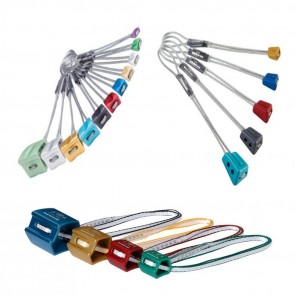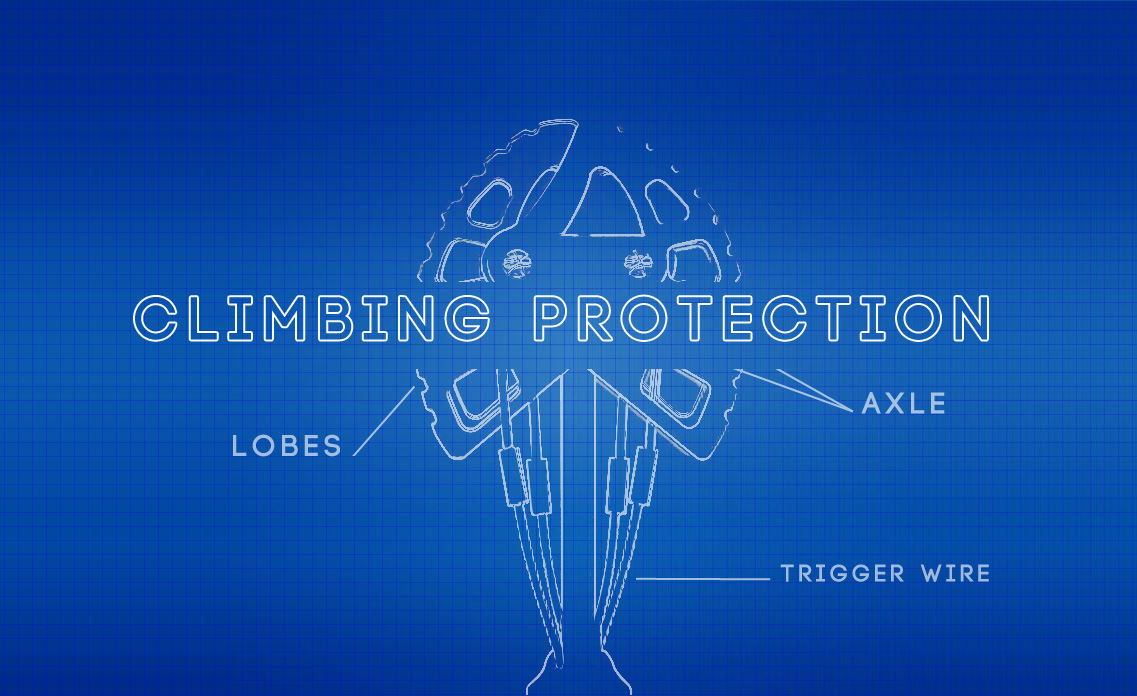
There are two types of protection used in climbing:
- Passive protection: Gear without moving parts.
- Active protection: Gear with moving parts.
Passive Protection
Nuts
Nuts come in a range of sizes and most nuts are colour coded for quick identification. To keep it simple, nuts are designed to be wedged into constrictions in the rock, getting caught at the narrow end of the crack.
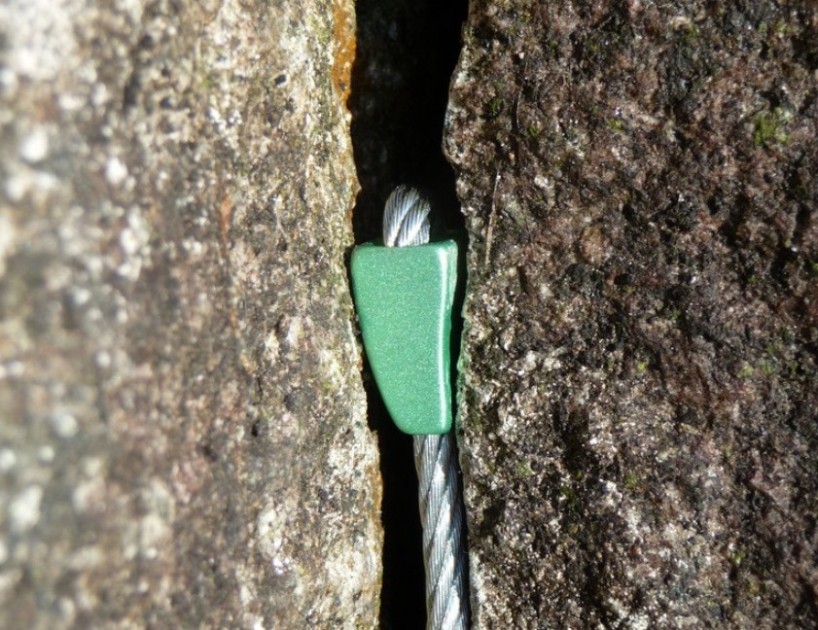
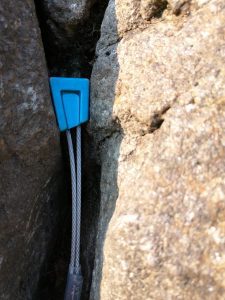
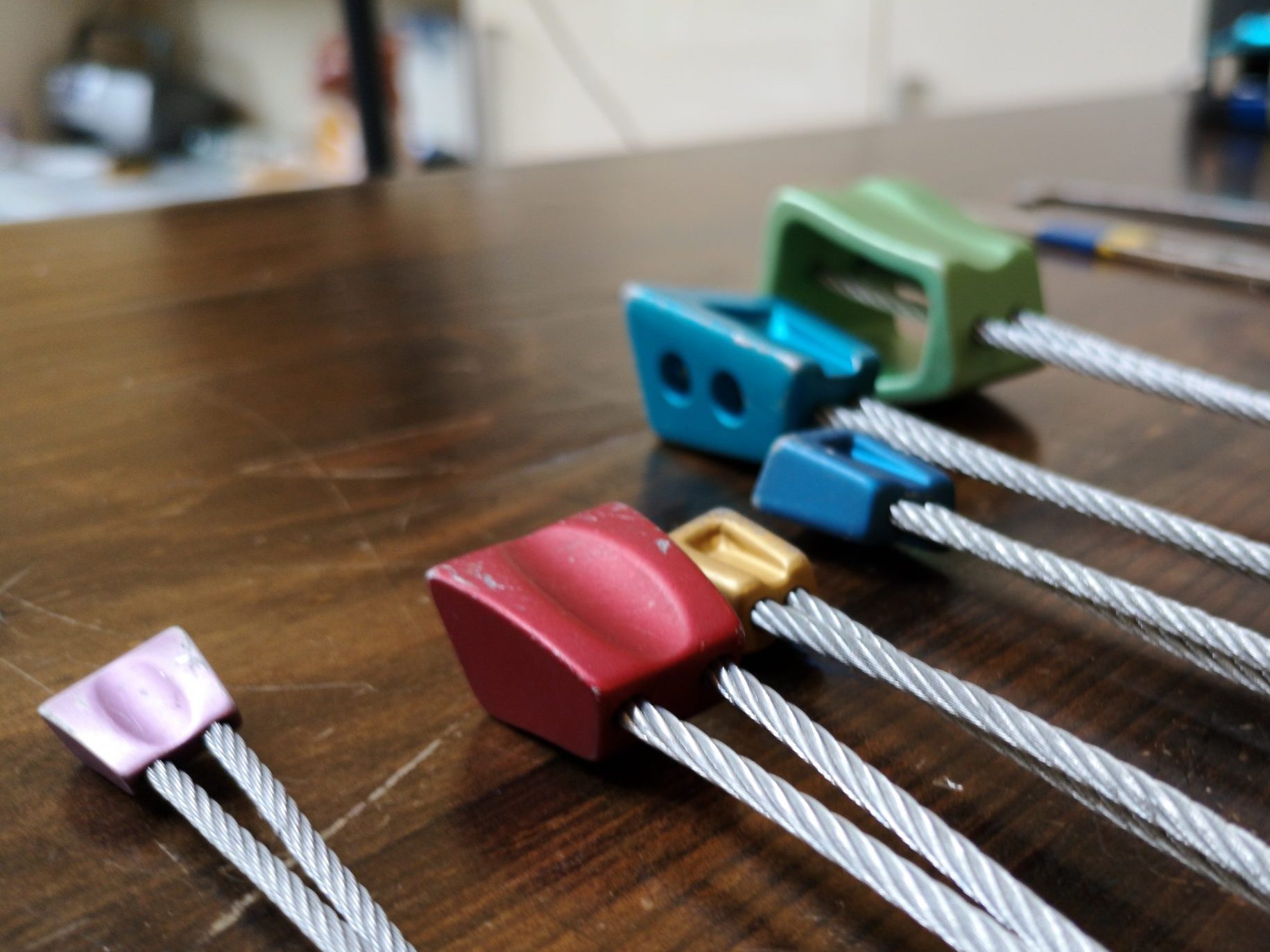
Curved Aluminium Nuts (standard)
These are your bog standard nut. Back in the 1960’s John Brailsford created the first nut and this is what it has evolved into today.
Off-set Nuts
Off-set nuts are designed to fit into flared and pin scarred cracks. The off-set shape of these nuts give you many options when placing that the standard nut doesn’t.
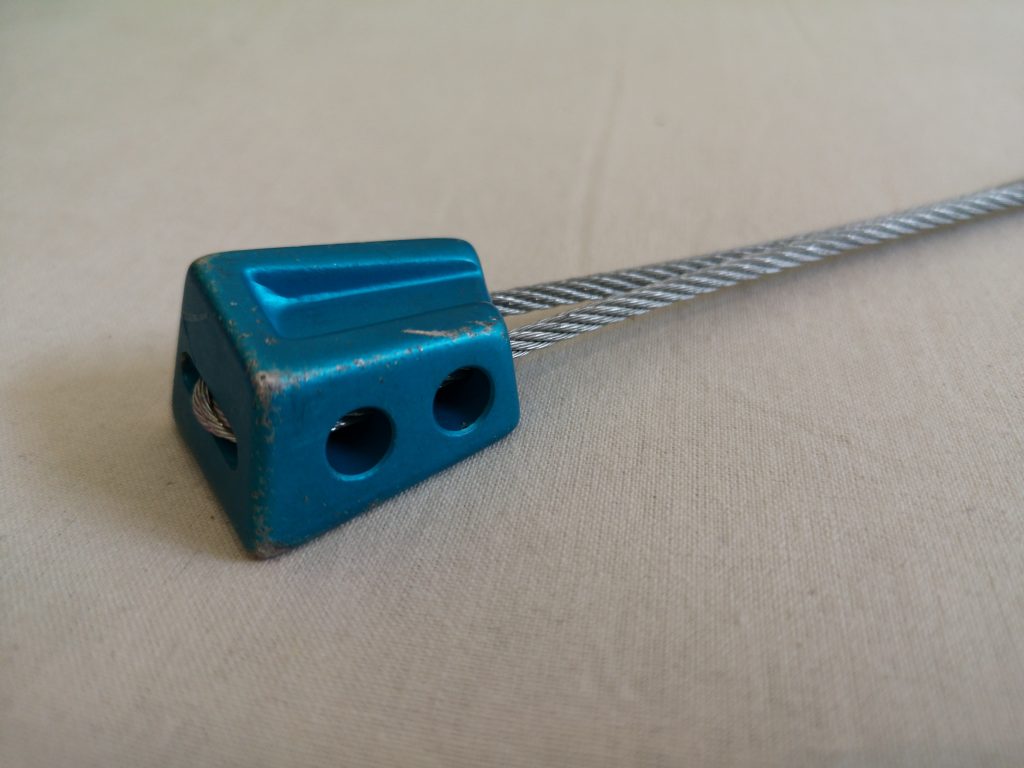
Micro Nuts
Micro nuts are…well, micro. They fit into tiny cracks where other nuts won’t. Due to the size of the wire they have a far lower strength rating with the DMM micro wallnut having a strength rating of 2kN.
Hex’s (Hexentrics)
Big chunky Nuts for big cracks. If you’re getting a set of Hexentrics then get the DMM Torque set. They have an adjustable sling which is super nice and the only way to go.
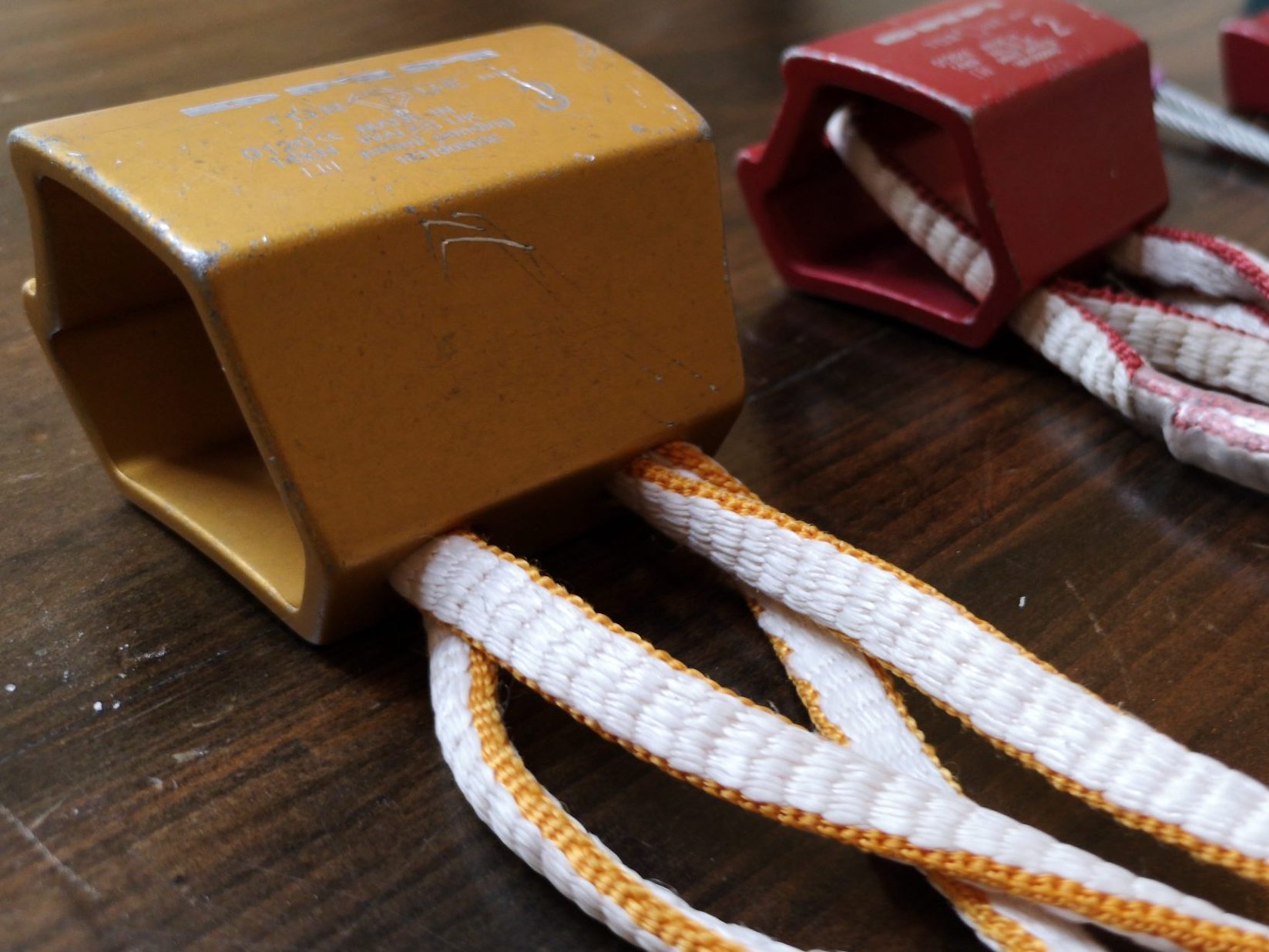
Active Protection
Active protection is any protection with moving parts such as cams and tricams. We will stick to talking about cams.
What are Cams?
A cam or “spring-loaded camming device”, is a device that is placed in cracks to protect the climber. The downward force on the stem of the cam forces the cam lobes to spread outwards, thus jamming in the crack.
Cam Anatomy
- Cam lobe: The lobes retract and their outer edge sits against the rock. The cam in the image has 4 lobes yet cams also have 3 lobes (TCU).
- Axel: What the cam lopes rotate around.
- Trigger: You pull the trigger to retract the lobes.
- Sling: What you clip your quickdraw into.
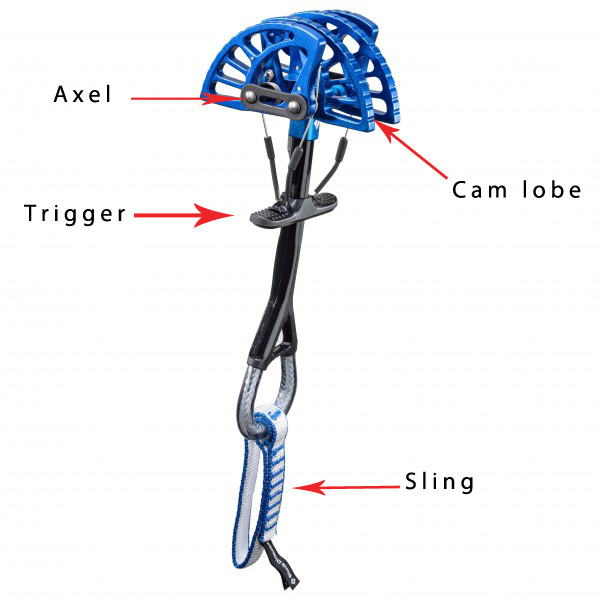
Single Axle vs Double Axle
As you can see from the image above, cams have axles. Some cams have a single axle while others have a double axle. So what’s the difference?

Double Axle Pro’s
- Greater Range: The camming device can be placed in a greater variety of cracks. Less likely for cam to walk.
- Do not Invert: The lobes on a single stem cam can invert and in turn screw up the wires on a cam which does not happen on a double axel. This also means that double axle cams can be used as passive protection.
Double Axel Con’s
- More Expensive: Cams in general are expensive pieces of kit and double axel cam’s are that bit more expensive.
- Heavier: You may hear people state this but I’m not too sure how much water the argument holds. The DMM dragon (double) compared to the DMM Demon (single) has 4g of a difference with the Dragon being that little bit bigger.
Single Stem vs U-stem (Double Stem)
According to Andy Kirkpatrick the ideal cam is double axle, single stem. So what are the benefits of a single stem cams ?
- Flexibility: Single stem cams are far more flexible than double. Due to this single stems fare better in horizontal cracks. A fall onto a double stem cam in a horizontal crack can mangle the wires.
Cams To Buy
- DMM Dragons
- Black Diamond Camalot
- Kouba Axel. Budget cams
Starter Kit
Alpine sports sell a good starter kit for €175. I’d get some extra smaller sized nuts and your good to go at the single pitch crags.
https://www.alpinesports.ie/climbing/climbing-starter-kit/dmm-nut-set-3.html
